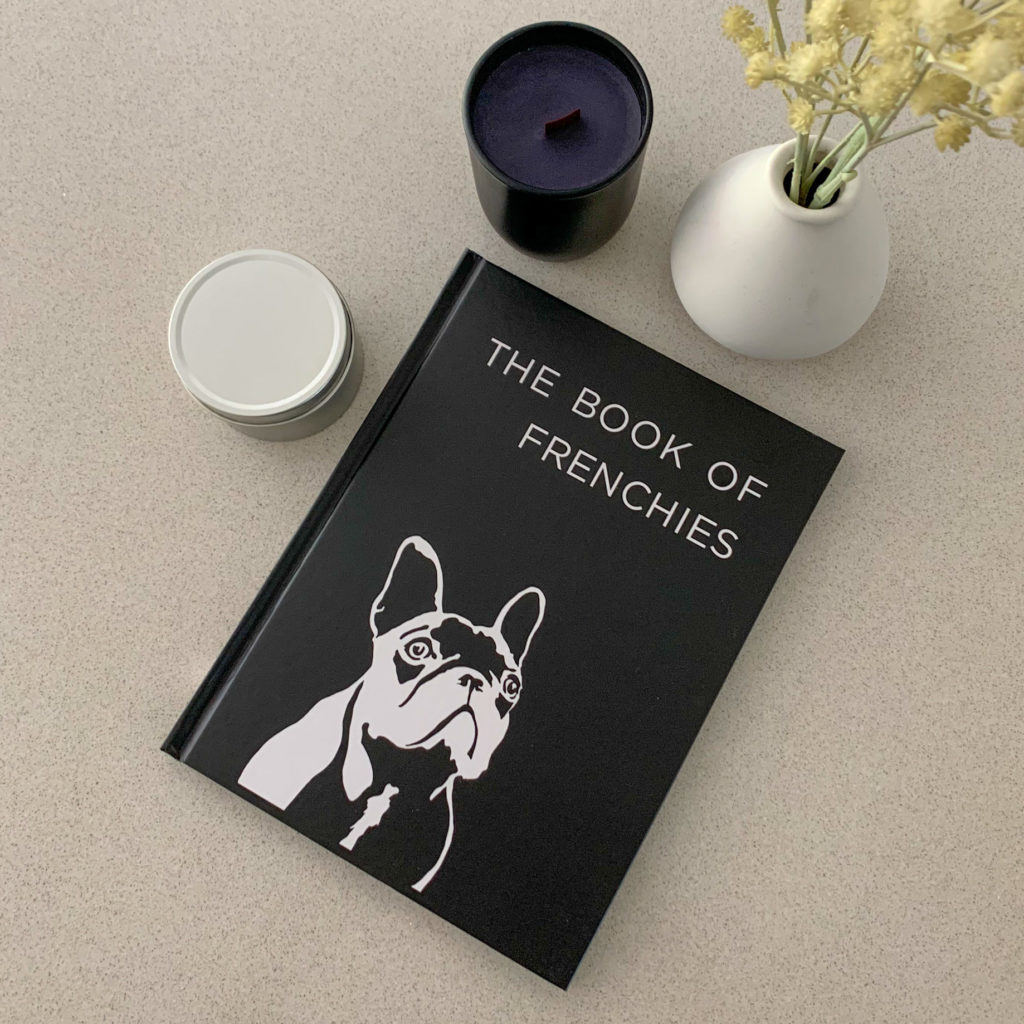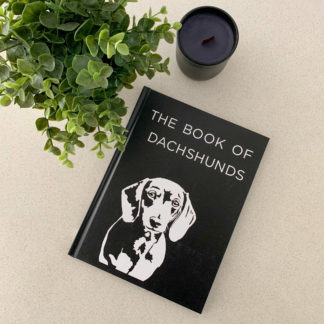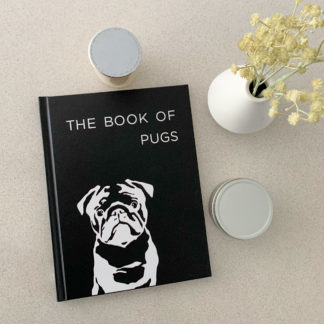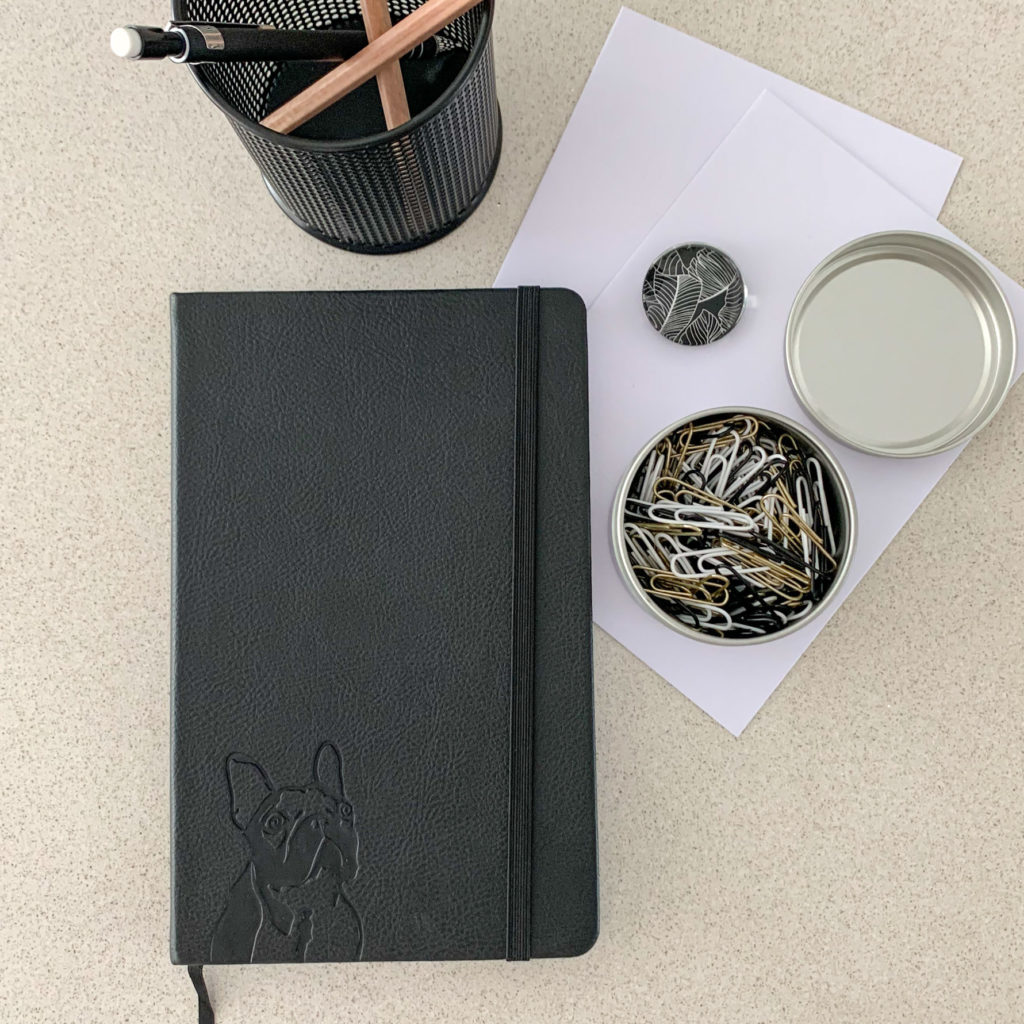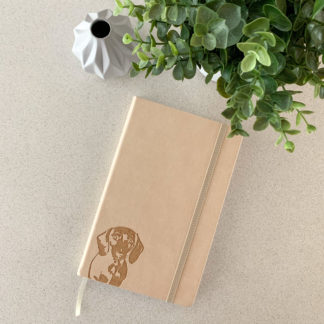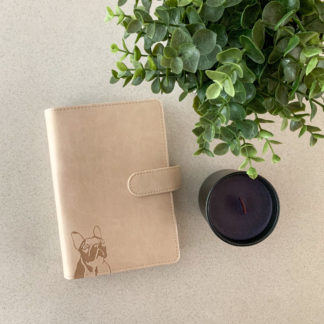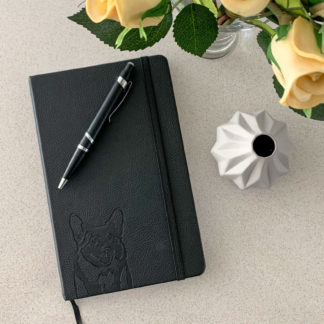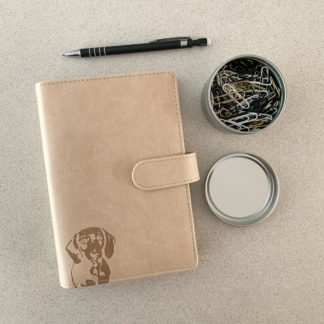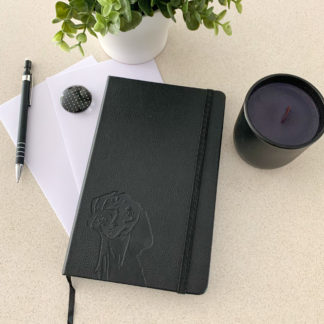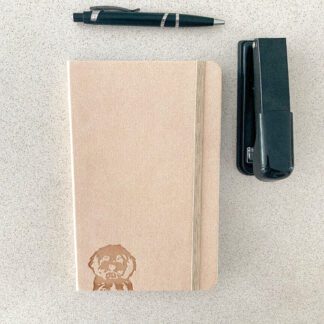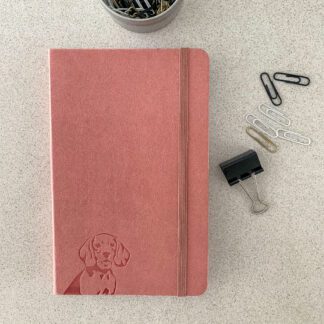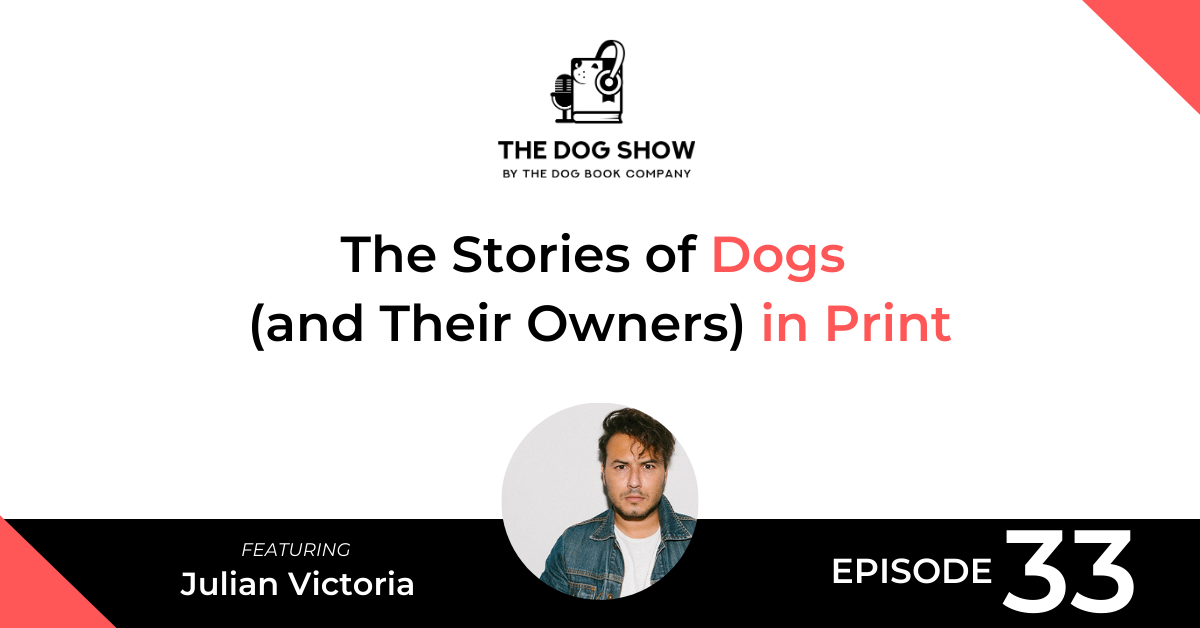
This episode of The Dog Show features Julian Victoria. Julian is the creative genius behind DOG Magazine, a lifestyle magazine for dog owners and lovers.
A photographer and video producer by trade, Julian was inspired to create a magazine, and his love for dogs and the icebreaking effect they have on their owners led to the first issue of DOG Magazine.
DOG takes a unique look at the owner behind the dog, with interviews and stories about interesting dog owners from all walks of life.
In the interview, we discuss dogs in print by taking an in-depth look at the creative process behind publishing an issue of DOG Magazine.
Find out more about DOG Magazine here:
Listen
Watch
Read
Will: This episode of “The Dog Show” features Julian Victoria. Julian is the creative genius behind DOG magazine, a lifestyle magazine for dog owners and lovers.
A photographer and video producer by trade, Julian was inspired to create a magazine and his love for dogs and the icebreaking effect they have on their owners led to the first issue of DOG magazine. DOG takes a unique look at the owner behind the dog with interviews and stories about interesting dog owners from all walks of life.
In the interview, we discuss dogs in print by taking an in-depth look at the creative process behind publishing an issue of DOG magazine.
Julian, welcome to “The Dog Show” today. Thank you so much for coming on.
Julian: No, thank you so much for having me.
Will: I’m really excited to talk to you about this crazy DOG magazine that you have created and the inspiration behind. But before we get into all of that and talk about your career and how you’ve got to where you are today, I want to hear a little bit more about your dogs.
So before we jumped on the interview, we were talking about one of your dogs that had passed on, Sophia, but you also have… There’s a couple of other dogs in the mix as well. Do you want to tell me a bit about your dogs?
Julian: Well, I used to have four dogs—three female ones and then a rescue one which is… His name is Dora but he’s a boy. He came with a name, so I kept it because I think it was very original to keep his name and ignore the gender of the dog.
But I have Sophia, and Pheobe, and Daisy. They were the same breed. They are Lakeland Terriers. Sadly, Sophia and Daisy passed away within these two years, but I still have Pheobe which is a senior now. She’s 14 and you can definitely tell now that she can’t hear very well, she can’t see very well, but I’m pretending that she just wants to ignore me and she doesn’t want to pay attention to me anymore so she pretends to be blind and deaf.
Will: You said Sophia was the most fun. I’m sure you wouldn’t tell the other dogs that.
Julian: I think when you have four dogs, you identify their personalities and out of the four… You know, I love them all but they all had different characters. And I think Sophia because it was my first dog, it was a little more special. It was my first dog as an adult, so you kind of learned how to take care of this dog and you make mistakes or you do, you know, the books or the training classes and things like that.
So she was very special. She was my experiment with dog ownership. And she turned out to be very social, very adventurous. You know, she will, you know… She didn’t care about anything. She would jump on stuff. She will, you know, get lost all the time because she was so curious about people.
So she was fun to be around and, you know, very social with a lot of people. She will, you know, like people and she will go with people if they give them treats and stuff, which is very dangerous, but she was very, very fun.
The other ones, like I said, Pheobe, I think Pheobe, she is a cat trapped in a dog’s body because she doesn’t care about anyone but herself and she’s always by herself. And, you know, she only comes when she needs something.
Daisy, she passed away last year, and she was 10 but she always had that puppy personality. She was very puppy-like, and I think she never grew up. So she was very shy, very protective, and she was always, like, next to me.
And Dora, which I think out of all of them, is the most unique dog that I ever had. It’s just like he is so human-like. His facial expressions are just sometimes too real when he looks at you. Very smart dog. I don’t know. He’s a rescue dog so I’m sure the previous owner did a really amazing job training him.
But he does really…stuff. He follows you. He looks at you. And if you do gestures with your hands, he kind of follow instructions, which I find very, very interesting. So, yeah. So he’s a very unique dog that I just keep ignoring that he’s getting old because I don’t want to lose him yet.
I even actually considered…someone proposed to me to do a documentary about cloning him just because he’s so unique, but we did a lot of research about cloning a dog and it was very, very… It was really bad for the dogs who were part of it. You know, like the mother and, you know, the whole process of it was too invested for the other dogs, which I just don’t feel like I want to be part of it. So we decided not to do the documentary about cloning my dog. So we just left it alone.
Will: That’s interesting. I’ve not really thought about cloning a dog before. Is that a thing that is done? Is that kind of, like, an ethical thing that is done in the UK or the United States?
Julian: Yeah. In the U.S., there’s a lot of people who does it. I think Barbra Streisand did it.
Will: That rings a bell. I think I might have read an article about that years ago.
Julian: So I think with that mentality of having Dora forever, you know, keeping the vision of him or have something similar look like him because he’s a rescue dog. He’s mixed. We’ll never get another dog exactly like him so the idea… Honestly, I made a comment with someone who works in Netflix about like how fun it will be to keep another Dora and keep copying…you know, cut and paste, and this person said, “Well, you should think about making a documentary about it.” And it sounded very interesting. I was very excited. I was very looking forward to the whole idea.
But once again, we did the research and it was just too much for the other dogs and I don’t think it’s fair to put those other dogs in that situation of selfishness. You know, it’s a little bit selfish and I didn’t want to be part of it. So, yeah. And I don’t think Netflix either wanted to be part of… It would be too controversial if you know what I mean.
Will: Okay. I feel like someone might do that at some point, a documentary about that, whether it’s ethical or not. I’m not sure but it’s interesting that it would kind of…the experiment from my perspective where it would be very interesting is that it was kind of look at that nature versus nurture argument because you’re saying Dora’s so unique but I wonder how much of that is from his history and his experiences and the brain chemistry that he’s developed from that.
Julian: That was the part of the idea of seeing how that plays a role of how he was brought up because I don’t know anything from him. I mean, I know his previous owners, but I don’t know how they trained him or, you know, how these people were with him.
So there were the chances that he will look like Dora but he would not act like Dora just because it’s just when they’re puppies, they are encoded with those special things that dog owners do and I don’t think that will ever do something exactly like Dora’s ex-dog owners where, you know…
Will: Yeah, it’s interesting that you mentioned you’ve had four dogs, and they all have different personalities and kind of different behaviors, and things like that because I guess that kind of debunks the idea that, you know, the dog turns into their owner in some way or your dogs have unique attributes.
Julian: With the magazine, I always ask that question. Like, do you think your dog reflects your personality or reflects the owner? And so I never actually asked that question to myself, but I think so. I think my dogs are… Like, when we’re in the park, we are… I go very early like around 6:00 when there’s no one because I used to have 4, and walking 4 dogs in the park gets a little bit too, you know… So I used to go very early, and I think when we do that, we just kept ourselves for ourselves. And I think when I walk or I do something, I just want to keep to myself. I don’t want to be distracted. And I think that’s something that I pick from my dogs. We were all in one pack, and we were not, you know, distracted. Sometimes a squirrel, yeah, but not with other things. I think we were just very focused. I think that’s what it is.
But, yeah, I don’t know. My dogs are normal, I think. I see other dogs and I will say, “Oh, my God, those dogs are out of control,” but I think my dogs are well-behaved. I think I never like to impose my dogs to other people. You know, I correct them if they’re barking or, you know, I don’t want to bring them to a household or a restaurant. Like, I tend to have dogs at home or in the countryside but never kind of, you know, put force into people or to places. And I think that’s how I am, too. like, I’m very careful with imposing people. So, yeah, I think that’s if I’d answer my question about if you reflect them.
Will: No, it’s interesting. It’s interesting to hear your perception on that as well. So what do you get out of being a dog owner? Because you obviously love dogs and you’ve got lots of dogs and you’ve got a magazine about dogs. So what do you personally get out of it?
Julian: It looks like I’m living twice. I literally came back to do an… we were doing an interview for a magazine. Not for our magazine but another magazine, and I was asking the same question to the person. And I always ask questions, but I never ask those questions to myself.
And today I actually realized that they do bring me a lot of things. And, for example, structure. Once again, I wake up every morning. In the morning, even if it’s raining, I walk them. You know, it just make me start my day and I think that’s very important.
I think when the dogs are not here or if I’m traveling or they’re somewhere, like I will easily sleep until 10. But having the dogs, it gives you that structure of waking up, and going with your day, and being more productive. I think that makes sense.
Will: That’s true. I do like that aspect of having a dog as well. If I’m ever tempted to sleep in, you get a tap on the shoulder and get [inaudible 00:11:30].
Julian: That’s true. Yeah, yeah. The thing is like with… Once again, four different personalities. With Sophia, she would not wait. Like, if you’re not up at 6, she will pee in the house. So because of me, I was like, “You know what? I need to get up before she gets up because if she does, she would do it.”
Daisy, on the other hand, she will scratch me or try to get my attention to take her out. The other two they can sleep until I sleep. So now there are only two, literally we can sleep until 11 and they won’t even bother getting up. But in my mind, I just don’t think it’s fair for them to hold themselves.
So I wake up and I do it and I try to exercise them because it’s the only time that I feel like they have the chance to be outside, and run, and things like that. And we normally do it for an hour because the rest of the day I’m busy or I’m doing something else. So, yeah.
Will: And as I said, you get the benefits from it as well. So keeping that habit is a good thing for you and your mental health.
Julian: Oh, yeah. Of coure, yeah. Of course. And, you know, it’s also good for your health. You know, you’re moving because, you know, you’re in your desk, for example, sometimes four hours, and you don’t go out besides walking your dog around the corner.
So having that hour in the morning with your dogs kind of really puts you in that, you know, exercise mode. At least I walk for an hour, you know, because of my dogs because, if it wasn’t that, I will probably work 10 hours and not even see outside.
Will: I actually find it’s good for the brain as well. It’s good for my mental health because, as you mentioned, like, you can get so involved at the desk working all the time or, you know, watching TV or do whenever you do it inside the home. When you get ouside for an hour with your dogs and get some fresh air or even if it’s raining, it’s almost like a reset for my brain, which I get from that.
Julian: I think I discovered… Like, now with two dogs, my life has been much simpler than before for everything. I mean, sadly Daisy died a year ago in the pandemic. But now with two dogs, the house is quiet and I can do more things.
For example, like, I noticed that I was editing some photos and I just couldn’t do it anymore and I kind of felt like I needed to go for a break. And if you have four dogs, I will think about twice because, you know, four dogs in a park.
So I took the two dogs and it was very easy just to, like, take a break, just go for a walk with the dogs. They will behave. They will behave with other dogs in the park. When I came back, it was just like I was so refreshed, and ready to just work again, and with a clear mind, see the errors that I was making, you know, before I went for a walk.
Will: Yeah, exactly. It’s very good for that. Okay, so I could probably talk about, you know, the benefits of dogs forever so let’s not get too sidetracked, but tell me more about… I mean you’ve been in the entertainment industry for many years, but how did you end up creating DOG magazine? What led you to that time?
Julian: I was doing some freelance photography for a few magazines, so independent magazines. And one of the magazines that I was working for or I was doing some freelance work, the editor, I became very good friends with him, and he kind of walked me through the whole process of creating a magazine.
And, you know, in my mind, I was like, “Well, that sounds very simple.” Not simple but it’s doable. You know, when you think about creating a magazine, you think… And I talked to my grandfather, and he was like, “You crazy. Do you even have the money to create a magazine?” But of course you need money, but I think there’s so many ways, if you have a very strong idea, the possibility to create and enjoy a magazine is very easy. Not easy but it’s doable.
And so with that mentality, and listening to what he does, and he telling me, you know, the process of a magazine, because I only knew just submit the pictures and I said I didn’t know anything else. I learned a lot from him and I decided, “You know what? I just want to try. I want to have my own publication,” but I didn’t know what it was, you know, what subject because I was like, you know, fashion is not my thing and there’s so many competition out there. You know, travel magazine, everyone is doing a travel magazine.
So I kind of want to have a magazine that kind of like talk about all the subjects but had something else in common. And I realized that dogs is that point that you can talk to people about anything, but it’s just the dog is kind of like the icebreaker of any conversation.
So you probably will have a conversation with an architect that you normally would not have but because both of you are dog owners, that’s the first icebreaker that you have. And I found it very easy to talk to those people in the park for example. People that you normally will not talk to and they will come easily to talk to you because you have a dog or they have a dog.
Sorry, my dog is next to me.
Will: I could see. That adds a bit of character. Yeah, I think that’s a really interesting kind of observation that people just drop their guards a little bit in the topic of dogs because it’s like a very personal thing but also you can share that personal thing with other people.
Julian: So my idea for the magazine in Issue #1 was to kind of like showcase a dog breed, and this is the idea of Issue #1 but it was showcase a dog breed and just kind of dissect the breed and any characteristics of that breed and create content out of it.
So we did a Dutch breed, and then we decided to go to Holland. We did like a travel piece. We talked about Dutch people and Dutch culture. We talked about the language. There’s a lot of Dutch ideas because of the dog.
But for Issue #2, we discovered that… You know, we got very interesting people that we could have conversations with, and they were willing to have it with us. So it was a little bit less doggy-based for Issue #2 because it was a little more interesting to see how people will be in the same level of you.
For example, if someone’s very famous, all the famous part of it will just stretch and you will have a human being who was a dog owner. And you have so much in common, you know, just because of this thing, this animal, and so we find it very interesting that we can have access to people, you know, people that we like, you know, creative people, interesting people just because we have dogs.
And so we wanted to go that route now just to kind of, like, have conversations about any topic but with the excuse that we all have dogs. So, yeah.
Will: Okay. So that’s kind of the creative direction of the magazine at the moment is to… I guess the dog is a centerpiece but then it’s really about the person behind the dog.
Julian: Exactly. So, like, I feel like it’s an excuse or a key into their house basically, but I think by every single issue that we do, the topics have been a little bit more serious, if I may say that, or for example, we talk about politics now.
You know, I think we did a piece, I think four years ago, about the new administration in the U.S. We said that the administration is completely different to where we have before to the point that they don’t even have a dog. You know, every single president at that time had a first dog, and this is the first time that a dog was not part of the White House. So we kind of used that idea to describe how different this administration was going to be.
So we kind of use a topic and we kind of implement a dog element to it, you know, which I find am very fascinated. You know, we talk about gender, for example, how people think because you are male, you have a certain type of dogs. And if you’re a female, you will go with tiny dogs, you know, purse dogs. So it was a really interesting conversation about gender based on dog breeds.
So things like that really excites me that, you know, it’s not about just, you know, how beautiful the dog is but there’s so many things behind it that we can talk about and implement the dog angle to it.
Will: So, when you’re creating a new issue, do you start with, you know, the breed of dog, or do you start with, you know, that important social issue that you want to address and then kind of work outwards from that?
Julian: I think it has changed for a bit. I think it started with Issue #4 which it was a Pomeranian. We really wanted to do the Pomeranian because we haven’t done a fluffy dog for example. So we kind of investigated who do we want to talk to who has a Pomeranian. So there was a lot of candidates that we had. So we looked for that person until we find it.
But we find out that it’s very difficult to be so specific on the dog breed because not a lot of people have that breed that we want to talk to. So now we just basically find very interesting people and kind of analyze what kind of dog they have and then see if that dog is kind of like… if it inspires to other stories.
So for example, the French Bulldog, we wanted to interview this actor and it was good because we can go to France. We can talk about French stuff. So it was really, really interesting to kind of like find someone who had an interest in dog that we can create content with.
Will: So it kind of starts with the person. Then you’re looking at… It’s multi-layered by the sound of it. You’ve got the person. You’ve got the dog breed. You’ve got the history behind both of those, and then you’ve also got the social issues that kind of weave in between them.
Julian: Exactly. So let’s do the French one. So the French Bulldog, we always play with the origin of the dog. So, you know, we go to those places with the origin. Sometimes really strange locations. Like the Pomeranian, we went to Polland in the middle of nowhere. And I find it fascinating just going to places that nobody wants to go, but we went there because that’s where the dog is from. And we did a whole travel piece about it and interview people and met people in that area.
So we always take those elements. We pay attention to those elements when we want to feature the dog or this person, you know, what else can we do with the dog breed or what else is behind a dog breed. But we always try to do a travel section because it’s always nice to go to a different place and meet people. Sorry.
Will: And you can start to choose dog breeds based on where you want to travel now.
Julian: Oh, my God. Yes, definitely. I think that’s what happened with Issue #2. We wanted to go to Japan so we did Shiba Inu. It’s a free vacation. And sometimes we do that. Just because we ideally would like to do that but it’s just the main story, the main dog owner is always difficult to find it.
You know, we wanted to do… What’s it called? The Basenji, for example. And I was like, “Who has a Basenji? Like, who famous person has a Basenji?” So it was really hard to look for that. You know, so we decided not to do it because, even though we have an amazing content, we need a main story. We need a character, and we couldn’t find it.
Will: I guess interestingly enough you could… I mean just a regular person or a nonfamous person would have an amazing story as well about the history of dogs. I’m sure that would create an issue, too, but…
Julian: No, we do have those people, too.
Will: Okay, but you want the kind of hero piece as well.
Julian: Yes, because it’s a magazine and we need to sell. So, you know, it’s a business, too. But we do incorporate… You know, we have famous people but we do have a person who’s around the corner but has the dog breed.
So we kind of, you know, integrate different things. In the magazine, everyone is equal. Just because you are famous or you’re a top designer, you are the same person next to the person at the local store who has a dog. You know what I mean?
So we try to treat everyone equal. Like, we say that we don’t have a main story like everyone is equal, and we put the same effort to every single story that we create.
Will: Cool. So do you have a favorite story from one of the issues that you could share.
Julian: I guess stories… I think my favorite stories of the magazines has always been the stories that people submit. Like, the personal stories or some writers who just want to write or, you know, they write fiction and non-fiction. Those stories are always very interesting.
You know, there’s one in Issue #2. There was this lady who had a Lakeland Terrier like me, and she kind of like tells a story of her dog getting old and how she had to adjust herself in the house to live with this dog. And it was the cutest and more relatable story that I ever read because everyone who has a dog will encounter that situation where you see your dog, you know, getting old, and you had to assist them and, you know, you make sure that he doesn’t trip in the stairs and things like that.
So I found that story very, very touching because I was like, “It’s going to happen to me, and I don’t know what I’m going to do but I had to, like, proof my house so the dog doesn’t hurt himself.” So those stories are always… I find them very interesting.
We get a lot of stories from people. You know, people are…you know, they’re free to send us their stories, but sometimes the stories…like, 90% of the stories are about, you know, a rescue dog and they send those pictures. They’re very graphic. And I think those people are the people who don’t know the magazine or hasn’t read the magazines, and they think those are the top stories that we produce, which, you know, sometimes we just say thank you very much but that’s not what we’re looking for.
So it’s always hard to find that really good story but, when it comes, it’s really amazing to publish it. So those are like my main stories, but I think in terms of a piece that I have liked for many reasons is my interview with this designer, [inaudible 00:27:20], just because he was so nice. His team was so helpful and very easy to work with. That made the story an amazing experience, and I think, out of all the stories that we have produced, I think that was the one that I enjoyed the most, and I’m very proud that I did it.
And it was just a different type of work that we have done, and I wish everyone that we have interviewed was like this but it always has been, like, my favorite story that I have produced and done. So, yeah.
Will: And which issue is that in?
Julian: That is actually Issue #6…
Will: Okay, Issue #6.
Julian: …which is the one that we just had.
Will: Okay, cool. Yeah, I mean it sounds like a very fulfilling process that you go through because there’s a lot of emotion involved but it’s kind of inspiring hope as well but also then you meet some interesting people and you’re sharing stories. And it’s a very human journey I guess that you’re going on when you create the magazine, which is then reflected in the end product.
Julian: Yeah, yeah. It’s a good project. I guess what I’m saying like I… And everyone who’s involved enjoys it. You know, we get to travel. We get to know people. We get to work with dogs. And it’s just a fun thing.
You meet not only people that we interview but, you know, illustrators, writers, other photographers. It’s kind of like work with creative people. It’s always been very, very interesting.
Will: Cool. Well, DOG Magazine for me is one, firstly, a beautiful-looking magazine, which would be perfect for, you know, a coffee table or buffet or something like that in someone’s house because it’s obviously got those chic, modern design aspects to it, but there’s also a granular substance behind the doors as well. So where can people find out more about DOG Magazine and everything that you’re doing?
Julian: Well, we literally just finished Issue #7 which is coming up—it’s actually being delivered on Thursday—is about the Italian greyhound. So it’s going to be an Italian-inspired issue. So we have a lot of Italian things. So that’s going to be available in our website from… It’s available now so you can actually pre-order it but it’s available to be shipped on Thursday. And our website is readdogmag.com and it’s the same thing for social media. In Instagram, you can actually purchase it on social media as well. The handle is @readdogmag. So, yeah.
Will: Perfect. Well, I’ll tag @readdogmag on Instagram and we’ll share the podcast there but also share all the links to the website and everything in the show notes.
Julian: Yeah, thank you.
Will: Julian, thank you so much for the chat today. I think it’s been an absolute… I’ve enjoyed myself so much. I’ve heard a lot about your dogs but also about the creative process you go through for DOG magazine and that’s a really fun and inspiring way to look at dog owners and their lifestyles.
Julian: We can actually talk for hours about dogs and…
Will: I know. I’m not sure other people would listen to it. Maybe they would.
Julian: It’s always interesting. It’s always interesting, and you don’t realize how much you can talk about it, you know, because there’s so many ways that you can go with the conversation and that’s the whole beauty of having dogs.
Will: Well, actually like the things that I’ve learned from this conversation about the way I can ask questions as well have been really interesting for me because there are so many different layers that you’re talking about when you interview people for the magazine and things like that into the story behind the dogs which has got me thinking as well.
Julian: No. It’s funny that you say that because I think a lot of brands actually hire me because of that. And I tend to segue from being, you know, put in a box as a dog thing. But sometimes if the project is very interesting, I will do it but I’ve been told that, you know, we have put a different perspective of how to work with dogs. And, you know, I always said that you are targeting the dog owner and not the dog.
Even for retail or things, the dog doesn’t know what pink or blue is. It’s the dog owner and you’re targeting the dog owner. And that’s the thing that we learned just to kind of target and focus on the dog owner and kind of like touch those elements that they like about their dogs and how can we stimulate those things, because the dog is just part of it but it’s all about the human.
Will: Yeah, definitely. Well, thank you once again for coming on “The Dog Show” today. I hope you’ve enjoyed it and I’ve learned a lot, as I said, and I’m sure everyone else really will have a lot of fun with this episode.
Julian: Thank you so much.
From Our Store
-
French Bulldog Coffee Table Book – The Book of Frenchies
From: EUR €33.53 Add to cart -
Dachshund Coffee Table Book – The Book of Dachshunds
From: EUR €33.53 Add to cart -
Pug Coffee Table Book – The Book of Pugs
EUR €33.53 Add to cart -
French Bulldog Notebook – A5, Hardcover, PU Leather, 100gsm Lined Pages, Bookmark (Three Colours)
EUR €19.56 Select options -
Dachshund Notebook – A5, Hardcover, PU Leather, 100gsm Lined Pages, Bookmark (Three Colours)
EUR €19.56 Select options -
Pug Notebook – A5, Hardcover, Black PU Leather, 100gsm Lined Pages, Bookmark (Three Colours)
EUR €19.56 Select options -
French Bulldog Planner – PU Leather Exterior, Metal Loose Leaf Ring Binder, 100gsm Paper (Two Colours)
EUR €36.33 Select options -
Corgi Notebook – A5, Hardcover, Black PU Leather, 100gsm Lined Pages, Bookmark (Three Colours)
EUR €19.56 Select options -
Dachshund Planner – PU Leather Exterior, Metal Loose Leaf Ring Binder, 100gsm Paper (Two Colours)
EUR €36.33 Select options -
Vizsla/Weimaraner Notebook – A5, Hardcover, PU Leather, 100gsm Lined Pages, Bookmark (Three Colours)
EUR €19.56 Select options -
Cavoodle Notebook – A5, Hardcover, Black PU Leather, 100gsm Lined Pages, Bookmark (Three Colours)
EUR €19.56 Select options -
Beagle Notebook – A5, Hardcover, PU Leather, 100gsm Lined Pages, Bookmark (Three Colours)
EUR €19.56 Select options

